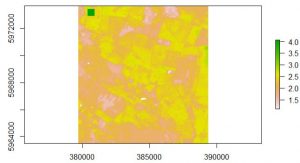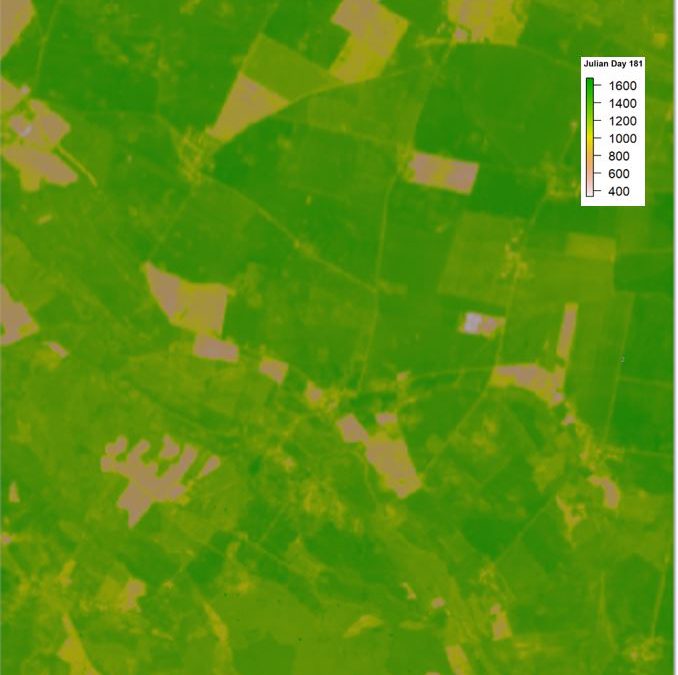Recently, I published “lue” package in R that is based on the light use efficiency model, which returns the biomass of any crop based on the simple physiological paradigm modelled by Shi et al. (2007). It contains LUE_BIOMASS () which calculates the absorbed photosynthetically active radiation (APAR) in the first step and the actual light use efficiency (LUEact) in the second. Many climatic parameters like clear sky photosynthetically active radiation (PAR), minimum, maximum and dewpoint temperature, which affect the biomass, has been also considered as an input variable. The thresholds of these climatic parameters play a significant role in calculating accurate biomass (Russel and Wilson 1994). Therefore, this function also considers the threshold values for example, the minimum values of minimum temperature signify the LUEact = 0 and maximum values of minimum temperatures define that LUEact equals to the optimal light use efficiency(LUEopt). Every crop has its own LUEopt, for instance the LUEopt for wheat is 3.0 (Djumaniyazova et al., 2010), in that case LUE_BIOMASS () multiplies this optimal value with minimum temperature. The output generated by this function looks similar as below:
Biomass_wheat <- LUE_BIOMASS(fpar_raster, par,tmin,-2,12,3) ,
Biomass_wheat

plot(Biomass_wheat)

Similarly, vapour pressure deficit (VPD) also alters the values of biomass. The LUE_BIOMASS_VPD () of this package calculates the biomass by considering the effect of VPD. The complete code with all functions of lue package is available on GitHub. If you have any more ideas or suggestions, please update us via GitHub (https://github.com/manidhill0n/lue).
References
Shi. Z., Ruecker, G. R., Mueller, M., Conrad, C., Lamers, J. P., Ibragimov, N., Martius, C., Strunz, G., Dech, S., & Vlek, P. L. (2007) – Modeling of Cotton Yields in the Amu Darya River Floodplains of Uzbekistan Integrating Multitemporal Remote Sensing and Minimum Field Data. Agronomy Journal 99, 1317-1326.
Russell, G., & Wilson, G. W. (1994) -An Agri-Pedo-Climatological Knowledge-Base of Wheat in Europe. Joint Research Centre, European Commission, Luxembourg, 158.
Djumaniyazova, Y., Sommer, R., Ibragimov, N., Ruzimov, J., Lamers, J., & Vlek, P. (2010) – Simulating water use and N response of winter wheat in the irrigated floodplains of Northwest Uzbekistan. Field Crops Research, 116, 239-251.

